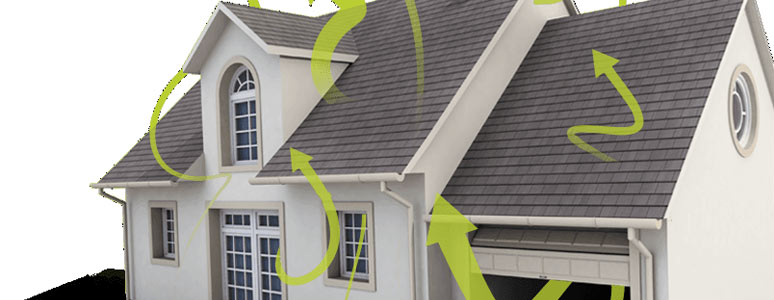All About Pollutants & Environmental Concerns
ENVIRONMENTAL CONCERNS
Radon Gas | An odorless radioactive gas produced by the decay of radioactive materials in rocks under the earth’s surface. Radon is released from the rocks and finds its way to the surface; usually it is released into the atmosphere. Radon comes into a house through holes in the foundation or basement or crawl space. Long-term exposure is believed to cause lung cancer. The U.S. Environmental Protection Agency (E.P.A.) has established radon levels that are thought to be unsafe. Testing techniques have been developed that allow homeowners to determine the exact quantity of radon in their homes. If a home is determined to have radon gas, the seller may, if the contract requires, be obligated to remediate the hazard, whether the danger is actual or only perceived. Most homes with elevated levels of radon can be fixed for between $500 and $2,500, with an average cost of about $1,200.
Radon Detection & Removal Companies:
Connecticut Basement Systems Inc | 800.319.8867
Radon Reduction, Testing Air & Water Systems | American Home 800.224.4441
Radon System of Connecticut | 800.287.2366
US Radon Systems | usradon systems.com| 800.343.8304
Websites:
CT Department of Public Health
www.dph.state.ct.us/BRS/Radon/radon_program.htm
U.S. EPA
www.epa.gov/iaq/radon
Radon Professional Training Programs
www.NRSB.org
www.radongas.org
Asbestos | Material used for many years as insulation on plumbing pipes and heat ducts and as general insulation because it is a poor heat conductor; also was used in floor tile and roofing material. Relatively harmless if not disturbed; can become life-threatening during its removal because of accompanying dust. Exposure to asbestos dust may exist if The asbestos ages and starts to disintegrate. Remodeling projects include the removal of asbestos shingles, roof tile, or insulation that can cause the dust to form in the air and expose people in the area to the health hazard.
Asbestos Removal & Construction Service Inc. | 860.675.8968
Asbetos Mangement LLC | 866.482.6677
Accurate Insulation & Asbestos Removal | 800.287.9896
Website: CT Department of Public Health www.dph.state.ct.us/BRS/Asbestos/asbestos_program.htm
Urea-Formaldehyde Foam Insulation (UFFI)
A synthetic material generally used to insulate buildings. Typically pumped between walls as a foam that later hardens and acts as an insulating material. Becomes dangerous because of gases released from the material after it hardens.
Lead Poisoning | Lead is a mineral that has been used extensively because of its pliability and its ability to impede water flow. Becomes a health hazard when ingested. Sources of lead poisoning include peeling or flaking paint and plumbing systems. Owners of residential properties built before 1978, when the use of lead-based paint was banned, will have to disclose to buyers or renters the presence of known lead-based paint hazards, if known to owner (seller) or landlord. A lead-based paint disclosure statement must be attached as a separate item to all real estate sales and lease contracts on pre-1978 residential properties. Real estate practitioners must distribute to buyers and renters a federal lead hazard pamphlet but won’t be responsible for ensuring that people read and understand the brochure. Buyers will have up to 10 days to have a lead-risk assessment performed on the property if they want one. Exemptions from the regulations are provided for housing for the elderly and disabled, provided children are not regularly present; for vacation homes and short-term rentals; for foreclosure sales; and for single-room rentals within dwellings.
FOR MORE INFORMATION CONTACT:
NATIONAL LEAD INFORMATION CLEARING HOUSE 1-800-424-LEAD (1-800-424-5323) or CT DEPARTMENT of PUBLIC HEALTH SECTION LEAD POISONING PREVENTION AND CONTROL PROGRAM 860-509-7299
WEBSITES:
Centers for Disease Control & Prevention
www.cdc.gov/nceh/lead/lead.htm
Ct.Department.of.Public.Health: www.dph.state.ct.us/BRS/Lead/Lead_program.htm
National Center for Healthy Housing
www.centerforhealthyhousing.org/
U.S. Department of Housing and Urban Development
www.hud.gov/offices/lead/index.cfm
U.S. Environmental Protection Agency
www.epa.gov/lead/
Polychlorinated Biphenyls (PCBs) | Used in the manufacture of electrical products such as voltage regulators as well as in paints and caulking materials. PCBs haven’t been used since 1977; however, they still are dangerous because many of the products still are being used. An environmental consultant can assess the property and recommend procedures for cleanup.
Underground Storage Tanks | Used in residential and commercial settings for many years. An estimated 3 million to 5 million underground storage tanks exist in the United States that hold hazardous substances such as gasoline. Risk occurs when containers become old, rust, and start to leak. Toxic material may enter the groundwater, contaminate the wells, and pollute the soil. Sources of pollution include older gas stations with steel tanks that develop leaks through oxidation (rusting) and underground containers used to hold fuel oil for older homes. Recent federal legislation calls for removal of such tanks and all the polluted soil around them.
Groundwater Contamination | Groundwater includes runoff at ground level as well as underground water systems that are sources of wells for both private and public facilities. Sources of contamination include waste-disposal sites, underground storage tanks, and pesticides and herbicides typically used in farming communities. The only protection for the general public against water contamination is heavy government regulation. Once contamination is identified, its source can be eliminated; the process often is time-consuming and may be very expensive.
HEALTH AND SAFETY CODES | BUILDING CODES
· Specify construction standards that must be met when erecting, maintaining, or demolishing buildings
· Generally identify requirements for electrical wiring, sanitary equipment, and fire-prevention standards
· Enforced by issuing building permits that verify compliance with building codes and zoning ordinances
· The building inspector issues a certificate of occupancy when the completed structure has been inspected and found satisfactory.
· Issuing a building permit does not take precedence over the violation of a deed restriction.



